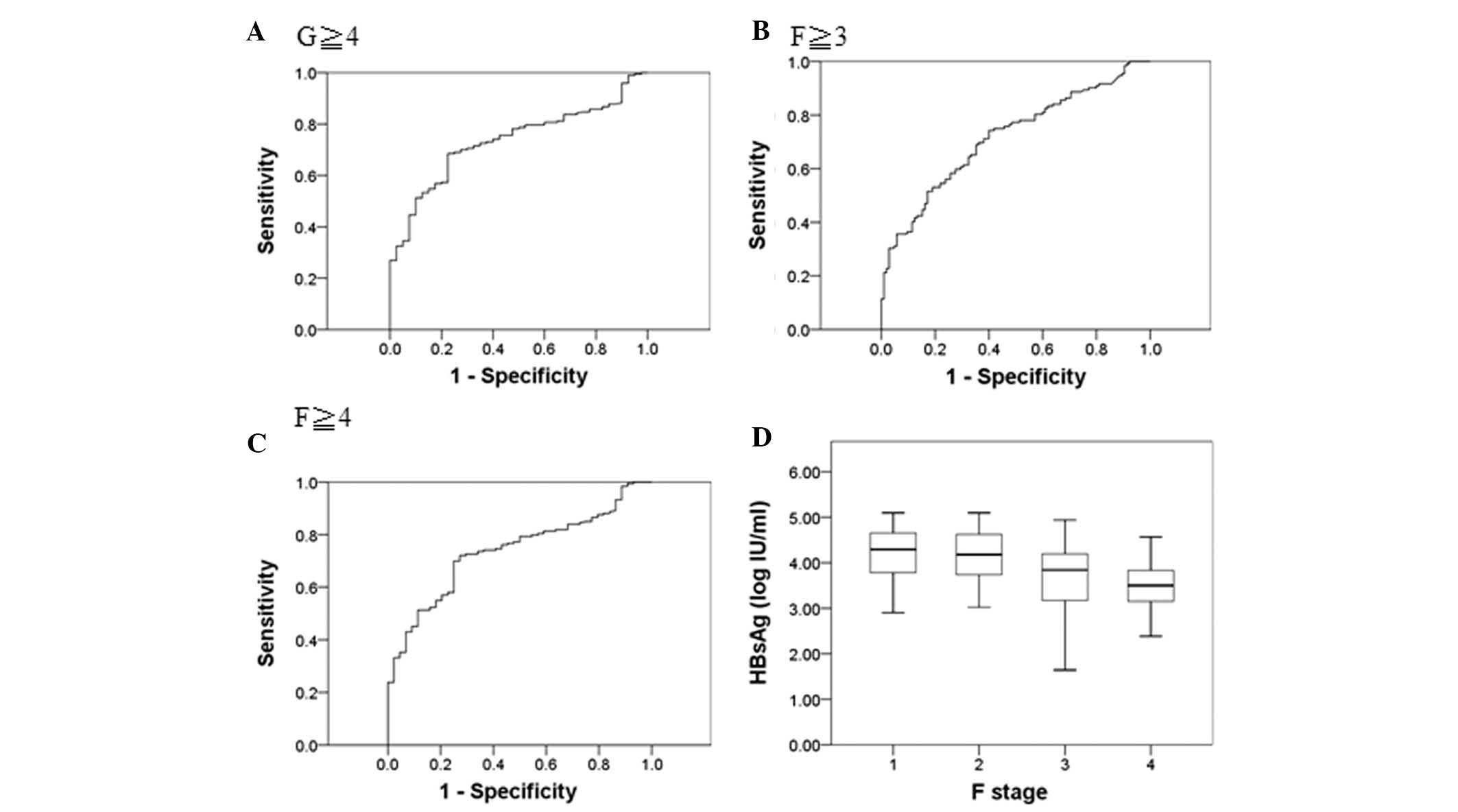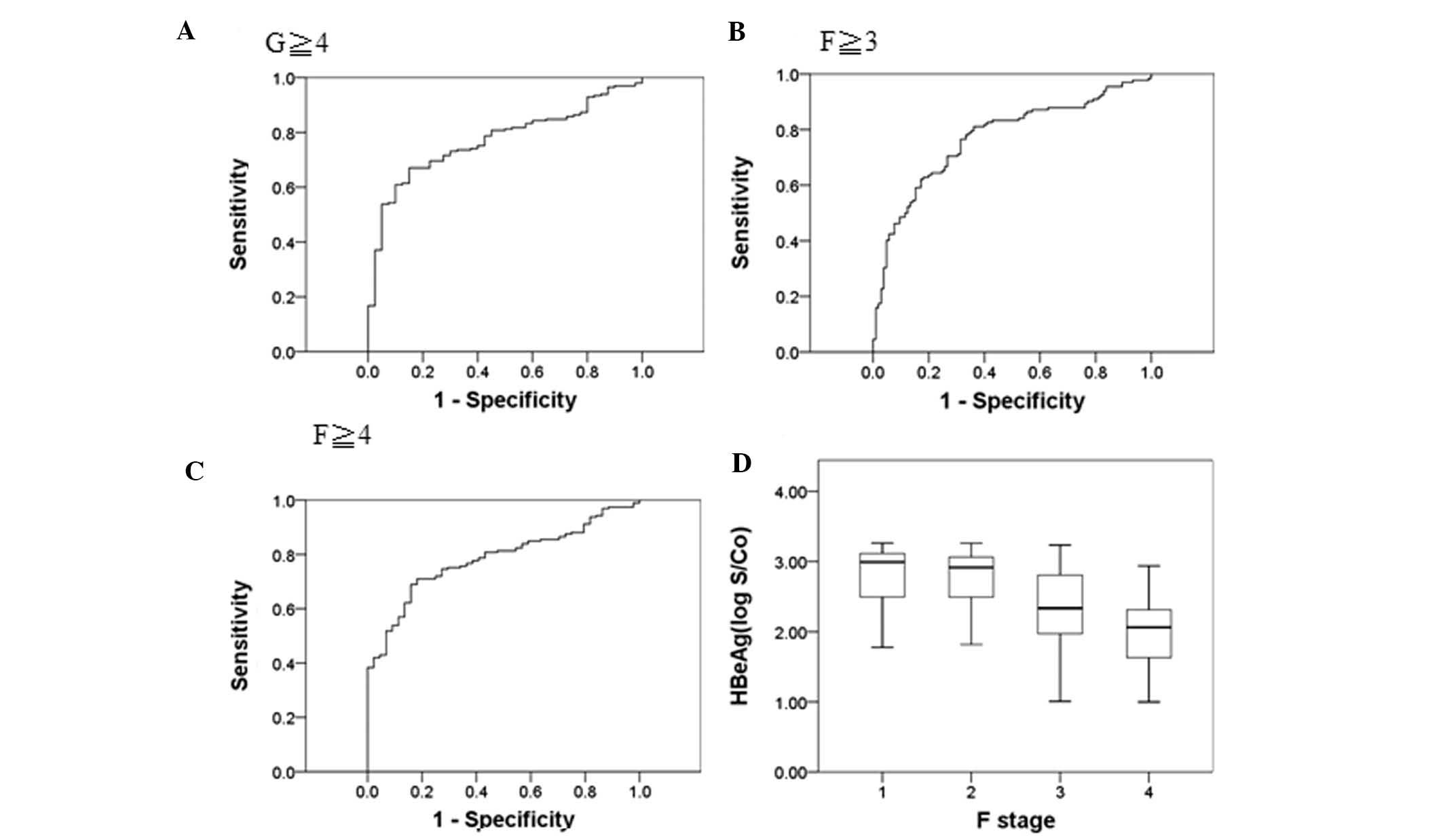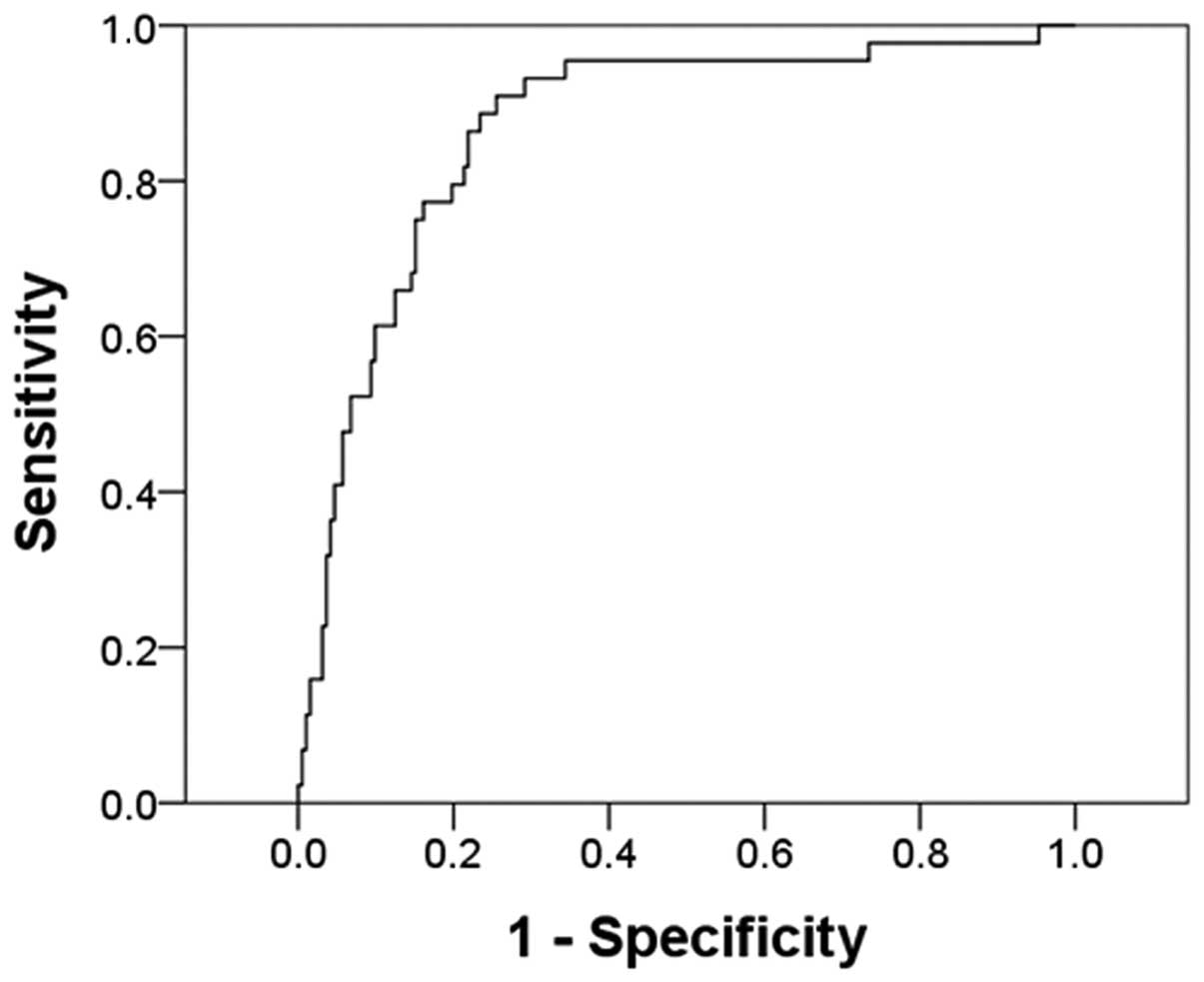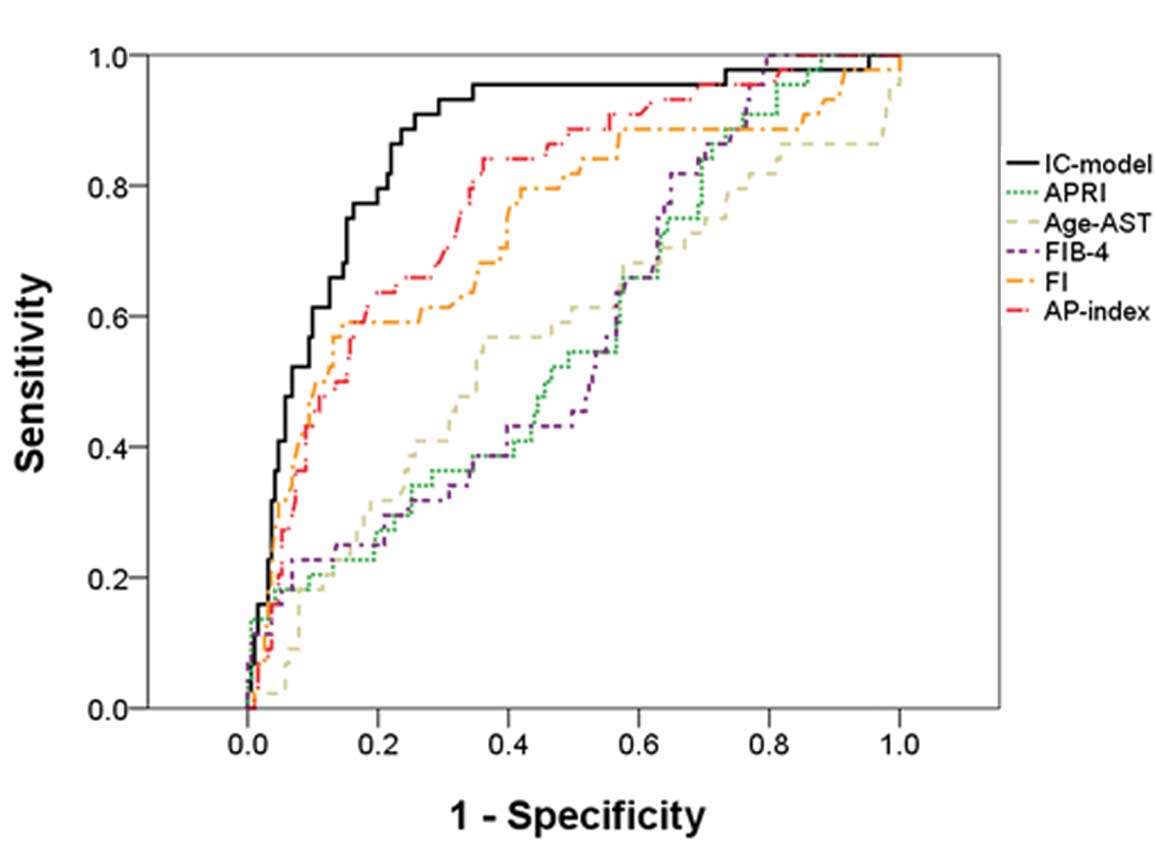|
1
|
Liang X, Bi S, Yang W, et al:
Epidemiological serosurvey of hepatitis B in China - declining HBV
prevalence due to hepatitis B vaccination. Vaccine. 27:6550–6557.
2009. View Article : Google Scholar : PubMed/NCBI
|
|
2
|
Lok AS: Chronic hepatitis B. N Engl J Med.
346:1682–1683. 2002. View Article : Google Scholar : PubMed/NCBI
|
|
3
|
Shi YH and Shi CH: Molecular
characteristics and stages of chronic hepatitis B virus infection.
World J Gastroenterol. 15:3099–3105. 2009. View Article : Google Scholar : PubMed/NCBI
|
|
4
|
Blumberg BS, Alter HJ and Visnich S: A
“new” antigen in leukemia sera. JAMA. 191:541–546. 1965. View Article : Google Scholar : PubMed/NCBI
|
|
5
|
Rotman Y, Brown TA and Hoofnagle JH:
Evaluation of the patient with hepatitis B. Hepatology. 49:S22–27.
2009. View Article : Google Scholar : PubMed/NCBI
|
|
6
|
Cornberg M, Protzer U, Dollinger MM, et
al: The German guideline for the management of hepatitis B virus
infection: short version. J Viral Hepat. 15:1–21. 2008. View Article : Google Scholar : PubMed/NCBI
|
|
7
|
Jaroszewicz J, Calle Serrano B, Wursthorn
K, et al: Hepatitis B surface antigen (HBsAg) levels in the natural
history of hepatitis B virus (HBV)-infection: a European
perspective. J Hepatol. 52:514–522. 2010. View Article : Google Scholar : PubMed/NCBI
|
|
8
|
Whitehead TP, Thorpe GHG, Carter TJN,
Groucutt C and Kricka LJ: Enhanced luminescence procedure for
sensitive determination of peroxidase labelled conjugates in
immunoassay. Nature. 305:1581983. View
Article : Google Scholar
|
|
9
|
Nguyen T, Desmond P and Locarnini S: The
role of quantitative hepatitis B serology in the natural history
and management of chronic hepatitis B. Hepatol Int. 3:5–15. 2009.
View Article : Google Scholar : PubMed/NCBI
|
|
10
|
Dwivedi M, Misra SP, Misra V, et al:
Seroprevalence of hepatitis B infection during pregnancy and risk
of perinatal transmission. Indian J Gastroenterol. 30:66–71. 2011.
View Article : Google Scholar : PubMed/NCBI
|
|
11
|
Ott JJ, Stevens GA and Wiersma ST: The
risk of perinatal hepatitis B virus transmission: hepatitis B e
antigen (HBeAg) prevalence estimates for all world regions. BMC
Infect Dis. 12:1312012. View Article : Google Scholar : PubMed/NCBI
|
|
12
|
Chen CH, Lee CM, Hung CH, et al: Hepatitis
B virus genotype B results in better immediate, late and sustained
responses to peginterferon-alfa in hepatitis-B-e-antigen-positive
patients. J Gastroenterol Hepatol. 26:461–468. 2011. View Article : Google Scholar : PubMed/NCBI
|
|
13
|
Perrillo R, Mimms L, Schechtman K, Robbins
D and Campbell C: Monitoring of antiviral therapy with quantitative
evaluation of HBeAg: a comparison with HBV DNA testing. Hepatology.
18:1306–1312. 1993. View Article : Google Scholar : PubMed/NCBI
|
|
14
|
Yen YH, Lu SN, Chen CH, et al: Changes in
serum hepatitis B e antigen (HBeAg) levels associated with the
emergence of YMDD mutants in HBeAg non-seroconverted patients
during lamivudine therapy. Liver Int. 27:1349–1355. 2007.
View Article : Google Scholar : PubMed/NCBI
|
|
15
|
Cadranel JF, Rufat P and Degos F:
Practices of liver biopsy in France: results of a prospective
nationwide survey. For the Group of Epidemiology of the French
Association for the Study of the Liver (AFEF). Hepatology.
32:477–481. 2000. View Article : Google Scholar : PubMed/NCBI
|
|
16
|
Chan HL, Wong VW, Wong GL, et al: A
longitudinal study on the natural history of serum hepatitis B
surface antigen changes in chronic hepatitis B. Hepatology.
52:1232–1241. 2010. View Article : Google Scholar : PubMed/NCBI
|
|
17
|
Gupta E, Kumar A, Choudhary A, Kumar M and
Sarin SK: Serum hepatitis B surface antigen levels correlate with
high serum HBV DNA levels in patients with chronic hepatitis B: a
cross-sectional study. Indian J Med Microbiol. 30:150–154. 2012.
View Article : Google Scholar : PubMed/NCBI
|
|
18
|
Seto WK, Wong DK, Fung J, et al: High
hepatitis B surface antigen levels predict insignificant fibrosis
in hepatitis B e antigen positive chronic hepatitis B. PLoS One.
7:e430872012. View Article : Google Scholar : PubMed/NCBI
|
|
19
|
Liu SQ, Zhu XJ, Sun XH, Li M and Gao YQ:
Characteristic of liver pathology in HBeAg-positive and
HBeAg-negative chronic hepatitis B patients with mildly elevated
ALT. Zhonghua Gan Zang Bing Za Zhi. 20:348–352. 2012.(In Chinese).
PubMed/NCBI
|
|
20
|
Martinot-Peignoux M, Carvalho-Filho R,
Lapalus M, et al: Hepatitis B surface antigen serum level is
associated with fibrosis severity in treatment-naïve, e
antigen-positive patients. J Hepatol. 58:1089–1095. 2013.
View Article : Google Scholar : PubMed/NCBI
|
|
21
|
Liaw YF, Kao JH, Piratvisuth T, et al:
Asian-Pacific consensus statement on the management of chronic
hepatitis B: a 2012 update. Hepatol Int. 6:531–561. 2012.
View Article : Google Scholar
|
|
22
|
Scheuer PJ, Standish RA and Dhillon AP:
Scoring of chronic hepatitis. Clin Liver Dis. 6:335–47. 2002.
View Article : Google Scholar : PubMed/NCBI
|
|
23
|
The programme of prevention and cure for
viral hepatitis. Parasitology ASoIDa, Medical aCSoHoC, Association,
. Zhonghua Ganzangbing Zazhi. 8. pp. 324–329. 2000
|
|
24
|
Kim SM, Sohn JH, Kim TY, et al: Comparison
of various noninvasive serum markers of liver fibrosis in chronic
viral liver disease. Korean J Hepatol. 15:454–463. 2009.(In
Korean). View Article : Google Scholar : PubMed/NCBI
|
|
25
|
Lee IC, Chan CC, Huang YH, et al:
Comparative analysis of noninvasive models to predict early liver
fibrosis in hepatitis B e Antigen-negative Chronic Hepatitis B. J
Clin Gastroenterol. 45:278–285. 2011. View Article : Google Scholar
|
|
26
|
Tong MJ, Hsu L, Hsien C, et al: A
comparison of hepatitis B viral markers of patients in different
clinical stages of chronic infection. Hepatol Int. 4:516–522. 2010.
View Article : Google Scholar : PubMed/NCBI
|
|
27
|
Park SH, Kim CH, Kim DJ, et al:
Development and validation of a model to predict advanced fibrosis
in chronic hepatitis B virus-infected patients with high viral load
and normal or minimally raised ALT. Dig Dis Sci. 56:1828–1834.
2011. View Article : Google Scholar
|
|
28
|
Poynard T, Ngo Y, Marcellin P, et al:
Impact of adefovir dipivoxil on liver fibrosis and activity
assessed with biochemical markers (FibroTest-ActiTest) in patients
infected by hepatitis B virus. J Viral Hepat. 16:203–213. 2009.
View Article : Google Scholar : PubMed/NCBI
|
|
29
|
Stibbe KJ, Verveer C, Francke J, et al:
Comparison of non-invasive assessment to diagnose liver fibrosis in
chronic hepatitis B and C patients. Scand J Gastroenterol.
46:962–972. 2011. View Article : Google Scholar : PubMed/NCBI
|
|
30
|
Liaw YF, Leung N, Kao JH, et al:
Asian-Pacific consensus statement on the management of chronic
hepatitis B: a 2008 update. Hepatol Int. 2:263–283. 2008.
View Article : Google Scholar
|
|
31
|
European Association For The Study Of The
Liver. EASL Clinical Practice Guidelines: management of chronic
hepatitis B. J Hepatol. 50:227–242. 2009. View Article : Google Scholar
|
|
32
|
Tsai SL, Chen PJ, Lai MY, et al: Acute
exacerbations of chronic type B hepatitis are accompanied by
increased T cell responses to hepatitis B core and e antigens.
Implications for hepatitis B e antigen seroconversion. J Clin
Invest. 89:87–96. 1992. View Article : Google Scholar : PubMed/NCBI
|
|
33
|
Chu CM and Liaw YF: Intrahepatic
distribution of hepatitis B surface and core antigens in chronic
hepatitis B virus infection. Hepatocyte with cytoplasmic/membranous
hepatitis B core antigen as a possible target for immune
hepatocytolysis. Gastroenterology. 92:220–225. 1987.PubMed/NCBI
|
|
34
|
McMahon BJ, Holck P, Bulkow L and Snowball
M: Serologic and clinical outcomes of 1536 Alaska Natives
chronically infected with hepatitis B virus. Ann Intern Med.
135:759–768. 2001. View Article : Google Scholar : PubMed/NCBI
|
|
35
|
Friedman SL: Liver fibrosis - from bench
to bedside. J Hepatol. 38:S38–S53. 2003. View Article : Google Scholar
|
|
36
|
Lee WM: Hepatitis B virus infection. N
Engl J Med. 337:1733–1745. 1997. View Article : Google Scholar : PubMed/NCBI
|
|
37
|
Imperial JC: Natural history of chronic
hepatitis B and C. J Gastroenterol Hepatol. 14:S1–S5. 1999.
View Article : Google Scholar : PubMed/NCBI
|
|
38
|
European Association for the Study of the
Liver. EASL clinical practice guidelines: Management of chronic
hepatitis B virus infection. J Hepatol. 57:167–185. 2012.PubMed/NCBI
|


















